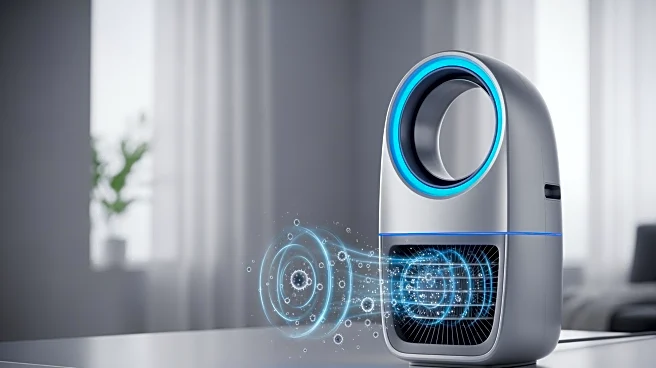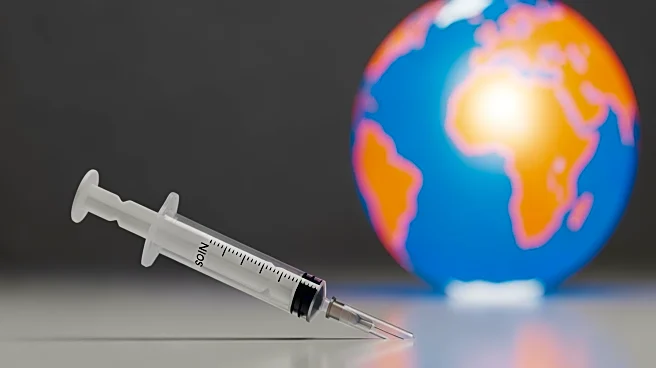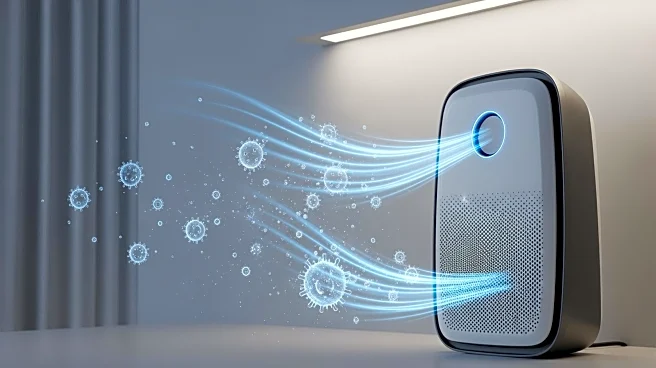What's Happening?
Researchers at UBC Okanagan have developed a new air-cleaning device designed to capture airborne pathogens, aiming to reduce the spread of respiratory illnesses in enclosed settings. The device uses an induction-removal or jet-sink airflow approach to capture exhaled
aerosols before they spread through the room. This method contrasts with traditional personalized ventilation systems, which often rely on fast-moving air streams that can be uncomfortable and less effective when a person shifts position. The new device significantly lowers the chance of infection compared to standard ventilation setups, offering a promising solution for improving indoor air quality.
Why It's Important?
The development of this new airflow device is crucial in the context of public health, especially as people spend more time indoors during colder months. Improving indoor air quality can play a significant role in mitigating the transmission of airborne diseases, which is particularly important in shared environments like clinics, classrooms, and offices. The device's ability to reduce infection risk by capturing airborne particles before they spread could lead to safer indoor spaces and potentially influence future ventilation guidelines. This innovation highlights the importance of personalized ventilation options in maintaining health and well-being.
What's Next?
The next steps involve refining the system for use in larger rooms and testing physical prototypes in clinical and public environments. Researchers hope that this technology will contribute to shaping future ventilation guidelines, ultimately helping create healthier and safer indoor spaces. As the device is further developed and tested, it may become a standard feature in various indoor settings, enhancing public health measures and reducing the spread of respiratory illnesses.














